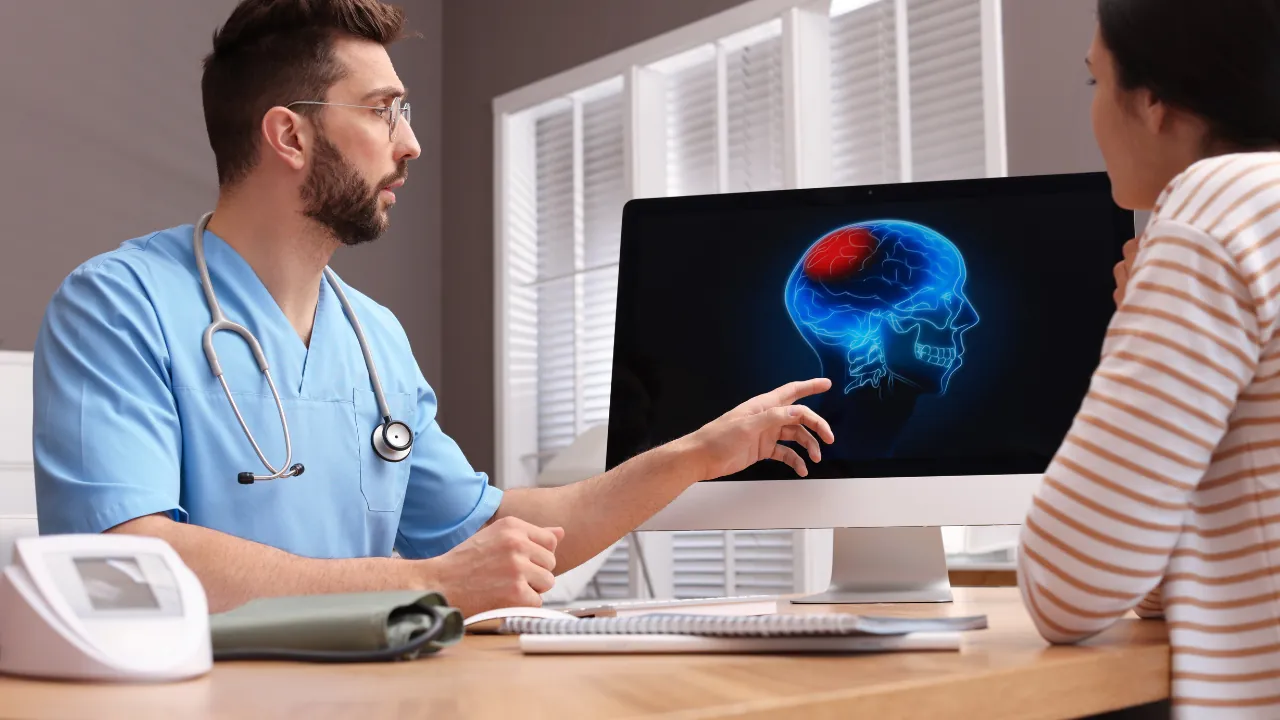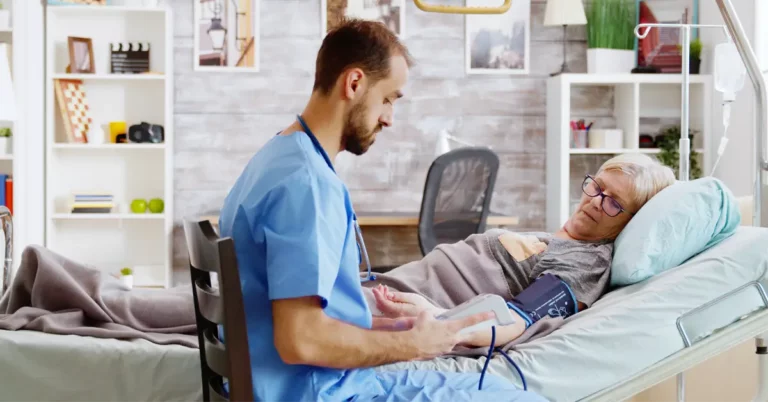Had surgery and worried about complications? Rebound intracranial hypertension (RIH) is a potential issue after specific procedures. This blog explores RIH, its signs, and how remote patient monitoring (RPM) can help with early detection, keeping you safe at home.
Beyond Recovery: Embracing Remote Monitoring to Prevent RIH
Our brains are delicate organs, protected by a fluid called cerebrospinal fluid (CSF). This fluid plays a crucial role in cushioning the brain, delivering nutrients, and removing waste. When the pressure of this fluid increases abnormally, it can lead to a serious condition called intracranial hypertension (ICH).
While ICH itself can be a concern, a specific complication known as rebound intracranial hypertension (RIH) can arise after certain surgeries aimed at treating other conditions. This blog delves deeper into RIH, exploring its causes, symptoms, and potential dangers. We’ll also introduce a promising tool called RPM, which can be a valuable asset in the early detection and management of RIH, ultimately fostering safer post-surgery experiences.
Understanding Rebound Intracranial Hypertension
Imagine your brain floating in a protective cushion of fluid called cerebrospinal fluid (CSF). This fluid plays a vital role, keeping your brain safe and functioning optimally. However, when the pressure of this fluid rises abnormally, it can lead to a condition called intracranial hypertension (ICH), causing pressure on the brain and potential damage.
Now, let’s delve specifically into RIH, a potential complication after certain surgeries meant to address low CSF pressure (hypotension). During these procedures, like epidural blood patching, a small amount of blood is injected into a specific space near the spine to “patch” a leak and raise the CSF pressure. While this initial increase aims to address the original problem, sometimes the pressure can “overshoot” and become too high, leading to RIH.
Understanding the symptoms of RIH is crucial for early detection and treatment. These can include:
- Headache: Often described as severe and persistent, potentially different from pre-surgery headaches.
- Nausea and vomiting: Frequent and debilitating, often occurring alongside the headache.
- Vision changes: Blurred vision, double vision, or even temporary vision loss are possible.
- Dizziness: Feeling lightheaded or unsteady, potentially leading to falls.
While less common, RIH can also manifest in more severe symptoms like seizures or altered consciousness. Recognizing these signs and seeking immediate medical attention is critical to prevent complications.
Remote Patient Monitoring (RPM): Your Ally in Early RIH Detection
After understanding RIH and its warning signs, let’s explore a valuable tool that can be your ally in early detection: remote patient monitoring (RPM).
Imagine having the ability to continuously monitor your health from the comfort of your home. That’s precisely what RPM allows. This technology utilizes various sensors and devices to collect real-time data on your vital signs, such as:
- Heart rate: Fluctuations can indicate potential stress on the body, which might be a sign of RIH.
- Blood pressure: Abnormal readings could be a warning sign, especially if accompanied by other symptoms.
- Respiratory rate: Changes in breathing patterns can be a subtle indicator of potential complications.
This collected data is then securely transmitted to your healthcare provider, allowing them to monitor your progress remotely. This continuous monitoring offers several advantages over traditional methods:
- Early detection: Subtle changes in vital signs, which might be missed during routine check-ups, can be caught early through RPM, allowing for prompt intervention.
- Improved communication: The constant flow of data facilitates better communication between you and your healthcare provider, leading to informed decisions and personalized care plans.
- Enhanced patient engagement: By actively participating in your own health monitoring, you feel empowered and potentially experience reduced anxiety about post-surgery recovery.
- Reduced hospital readmissions: Early detection and intervention through RPM can potentially prevent the need for hospitalization due to complications like RIH.
Real-Life Scenarios: How RPM Makes a Difference in Managing RIH
Imagine experiencing a post-surgery headache. While seemingly common, what if, through RPM, you could avoid the uncertainty and potential complications associated with RIH? Here are some real-life scenarios where RPM can make a significant difference:
Scenario 1: Catching Subtle Changes Early
Following surgery, you experience a mild headache, but dismiss it as post-surgical discomfort. However, your RPM system detects a slight increase in your heart rate and blood pressure compared to your baseline. This information is promptly sent to your healthcare provider, who alerts you to monitor the situation closely. As the headache intensifies, you discuss your symptoms with the provider, leading to a timely diagnosis of RIH and the initiation of appropriate treatment, preventing further complications.
Scenario 2: Empowering Informed Decisions
During your recovery, you feel well but experience occasional dizziness. Concerned, you consult your RPM data, which reveals slightly elevated blood pressure readings compared to the previous day. This information empowers you to proactively contact your healthcare provider. After discussing your symptoms and sharing the data, they advise you to adjust your medication dosage and suggest additional rest. This proactive approach, facilitated by RPM, helps ensure a smooth and safe recovery.
Scenario 3: Reducing Readmission Risk
While recovering at home, you experience a sudden and severe headache, accompanied by nausea and vomiting. Your RPM system detects a drastic increase in your heart rate and blood pressure, triggering an alert to your healthcare provider. Recognizing the signs of potential RIH, the provider instructs you to seek immediate medical attention. This early intervention, aided by RPM data, prevents a potentially serious situation and reduces the risk of hospital readmission.
These scenarios highlight how RPM acts as a valuable tool for both patients and healthcare providers in managing RIH. By enabling early detection, improved communication, and informed decision-making, RPM ultimately promotes safer and smoother post-surgery recovery journeys.
Empowering Your Recovery Journey with DrKumo RPM
Rebound intracranial hypertension (RIH) may arise as a complication after certain surgeries, urging us to remain vigilant about its symptoms and seek prompt medical attention if they occur. However, preventative measures are key to ensuring a smooth and safe recovery.
This is where DrKumo RPM steps in as a powerful ally. By offering continuous monitoring, our RPM allows for the early detection of subtle changes in vital signs that might otherwise go unnoticed during routine check-ups. This early detection empowers both patients and healthcare providers:
- Patients: Gain real-time insights into their own health data, fostering a sense of proactive participation in their recovery. Subtle changes that might raise concerns can be easily communicated to their healthcare provider, leading to timely intervention and potentially preventing complications.
- Healthcare providers: Receive a continuous stream of valuable data, enabling them to make informed decisions regarding treatment plans and adjustments. They can proactively address any emerging concerns, potentially preventing the need for further complications or hospital readmissions.
As you embark on your post-surgery recovery journey, remember that communication is vital. Openly discuss your concerns and potential anxieties with your healthcare provider, and explore the potential benefits of incorporating DrKumo RPM into your recovery plan. By embracing this technology, you’ll gain a sense of empowerment and informed participation, ultimately promoting a safe, smooth, and collaborative recovery process.
Contact DrKumo to know more about remote patient monitoring.
Remember: This information is for educational purposes only and should not be a substitute for professional medical advice. Always consult with a qualified healthcare professional for any questions or concerns related to your health.








